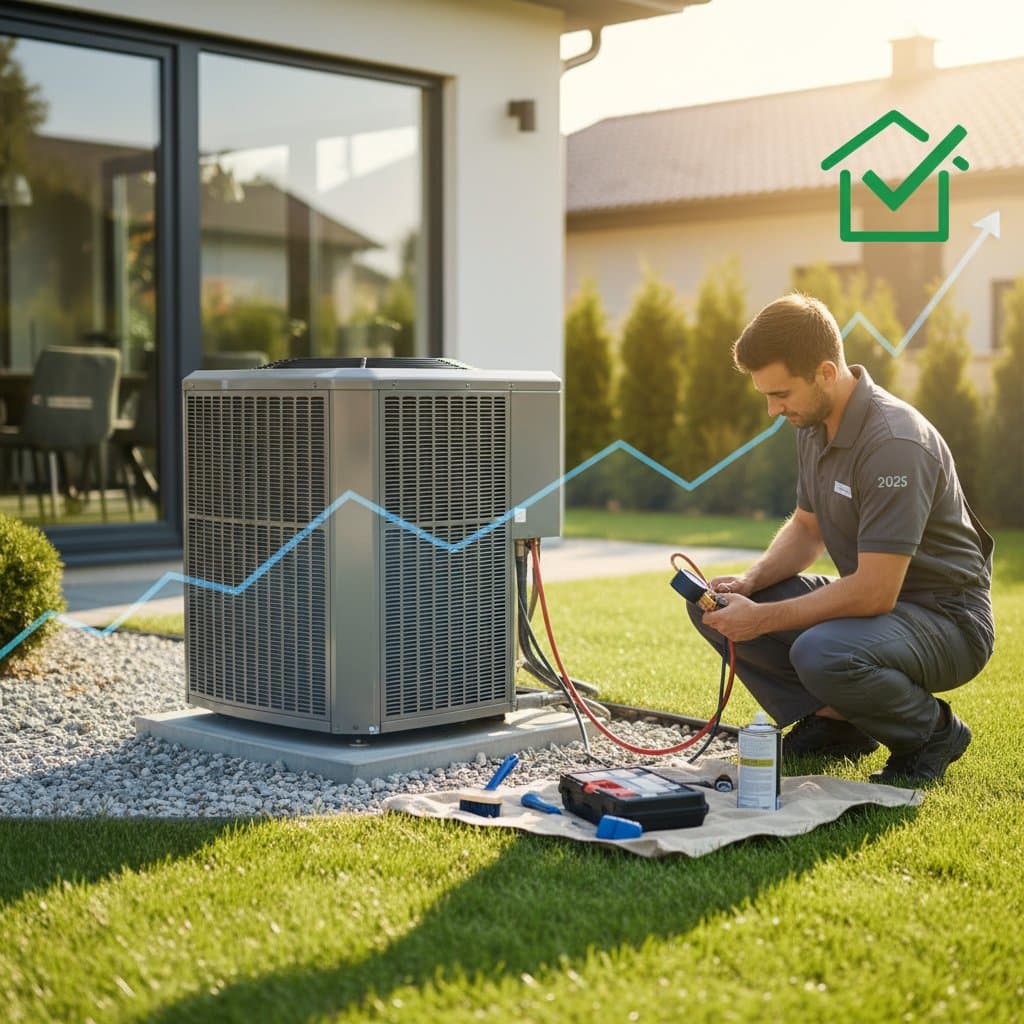The Value of Regular AC Tune-Ups in Preventing Summer Breakdowns
Summer heat waves challenge air conditioning systems, and a unit that falters during peak demand disrupts daily comfort. Professional AC tune-ups address this risk by ensuring reliable performance when temperatures soar. These services go beyond basic cleaning to include thorough inspections of electrical components, refrigerant levels, airflow paths, and overall cooling capacity. Homeowners benefit from extended equipment life, reduced energy consumption, and consistent indoor temperatures.
Planning ahead with knowledge of costs, service options, and scheduling strategies empowers better decisions. This approach avoids unexpected repairs and maintains a serene home environment.
Understanding Pricing Models for AC Tune-Ups
Flat Fees Compared to Hourly Charges
Most HVAC providers prefer flat fees for routine AC tune-ups, which cover a standard set of diagnostic and maintenance tasks. This structure offers clear upfront pricing, allowing homeowners to budget without surprises. Hourly billing, typically ranging from $75 to $125, applies more often to troubleshooting intricate problems rather than standard maintenance.
Pricing Based on Units or Entire Projects
Properties equipped with multiple air conditioning units face per-unit charges, where each additional system adds $50 to $100 to the invoice. For extensive installations, such as those in larger homes, providers may propose project-based rates that incorporate volume discounts. This method streamlines costs for comprehensive coverage.
Bundled Packages for Seasonal Maintenance
Annual maintenance packages frequently encompass both cooling and heating services, priced between $200 and $400 for the year with two scheduled visits. Such arrangements yield savings of up to 20 percent over individual appointments. Homeowners gain peace of mind through proactive care across seasons.
Subscription Plans Versus Single Visits
Maintenance subscriptions provide steady expenses through fixed monthly or annual payments, often featuring priority service slots, repair discounts, and included tune-ups. Single-service calls incur higher per-visit fees but suit those preferring flexibility without long-term ties. Evaluate needs to select the optimal path.
Factors That Shape AC Tune-Up Costs
System Capacity and Configuration
The scale of an air conditioning setup influences service duration and resources. Servicing a compact 2-ton unit proceeds swiftly, whereas a 5-ton model or multi-zone array demands extended attention to coils, handlers, and connections. Larger configurations naturally elevate expenses due to increased complexity.
Technical Demands of the Equipment
Aging units or those reliant on phased-out refrigerants necessitate experts with advanced certifications, which command premium rates. Technicians skilled in these areas ensure compliance and safety, justifying the added investment.
Duration of the Service Appointment
Routine checks span approximately one hour, but detailed cleanings extend to two or three hours for thorough results. Time-based pricing directly mirrors this variance, emphasizing the value of efficient professionals.
Additional Supplies and Components
Essential items like fresh filters, refrigerant top-offs, drain treatments, and specialized cleaners contribute $50 to $100 to the total. Rare needs for unique parts may push costs higher, though providers often stock common essentials.
Components of a Thorough AC Tune-Up
Technicians adhere to a systematic protocol to optimize performance and preempt issues. Key actions include:
- Securing and examining electrical wiring and connections
- Assessing and calibrating refrigerant levels for optimal pressure
- Removing debris from condenser and evaporator coils
- Evaluating blower motor operation and adjusting belt tension
- Clearing the condensate drain to prevent water buildup
- Scanning duct systems for inefficiencies or obstructions
- Verifying thermostat calibration for precise control
- Analyzing temperature drops between intake and output air
These measures enhance operational efficiency by up to 15 percent, according to energy experts, leading to measurable reductions in utility expenses. Early detection of wear prevents minor problems from escalating.
Selecting a Dependable HVAC Provider
The choice of service professional impacts the tune-up's effectiveness as much as the procedure itself. Prioritize firms with valid licenses, insurance coverage, and certifications from organizations like the Air Conditioning Contractors of America or NATE. Insist on detailed written quotes that specify inclusions and fees for each level of service.
Examine online feedback and ratings to gauge reliability and customer experiences. Providers who maintain open pricing policies and furnish service logs build lasting trust. Seek guarantees on workmanship, including complimentary follow-ups for prompt post-service concerns.
Integrating Efficiency and Sustainability in Maintenance
Modern tune-ups increasingly incorporate green methods to minimize ecological effects. Options such as eco-safe cleaners, refrigerants with lower global warming potential, and advanced filtration systems improve air purity and system longevity. These enhancements, adding $25 to $75, align with goals of cost savings and environmental responsibility.
Homeowners adopting these practices enjoy enhanced performance alongside reduced emissions. Such forward-thinking care supports broader sustainability efforts.
Steering Clear of Maintenance Pitfalls
Postponing tune-ups in pursuit of short-term savings frequently results in substantial repair bills during emergencies. Engaging unqualified individuals risks inadequate service and potential warranty invalidation. Partial do-it-yourself efforts, like filter swaps alone, overlook critical elements such as electrical integrity or refrigerant balance.
Address these oversights by committing to professional annual inspections. This discipline safeguards investments and ensures dependable cooling.
Strategies for Long-Term System Reliability
Implement a consistent maintenance calendar to align tune-ups with seasonal shifts, ideally before summer intensifies. Track service records to monitor trends and anticipate needs. Pair professional care with simple home habits, such as prompt filter changes, to maximize benefits.
These steps not only prolong equipment durability but also foster energy-wise operations. Reliable air conditioning elevates quality of life, particularly in demanding climates.





